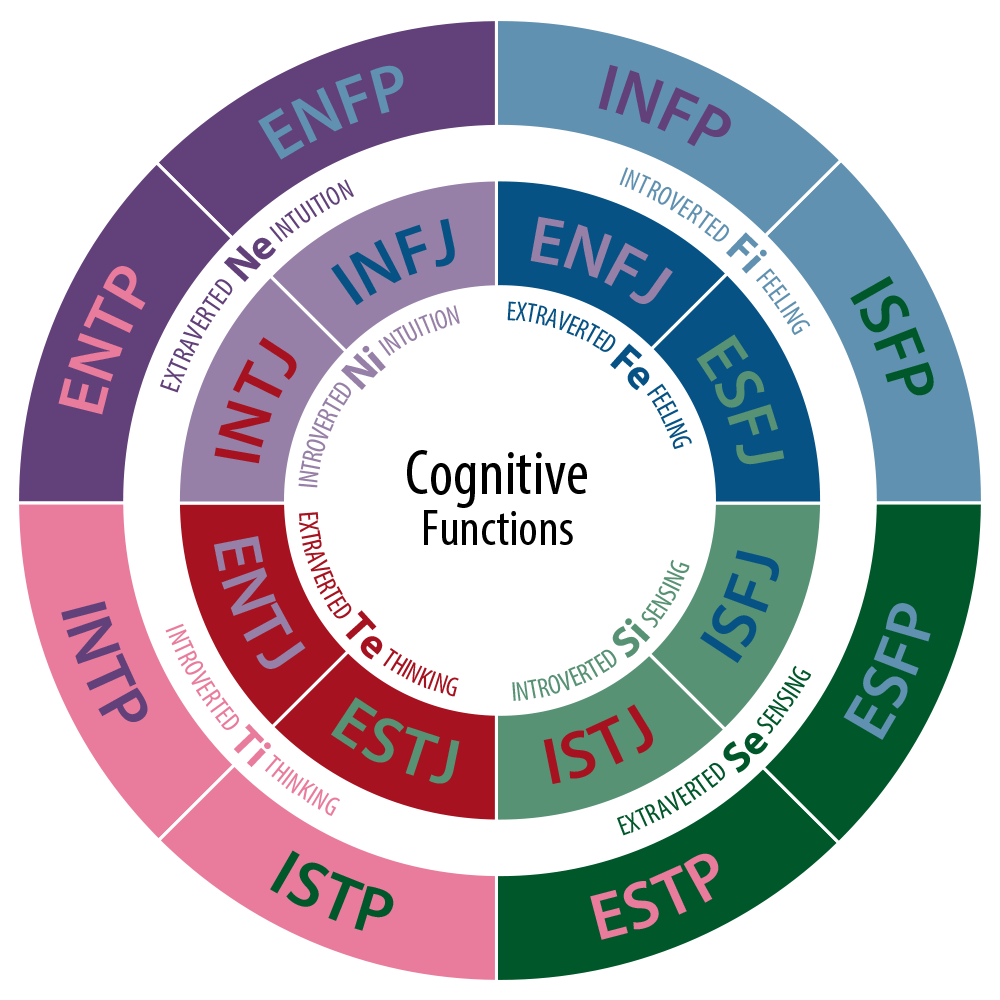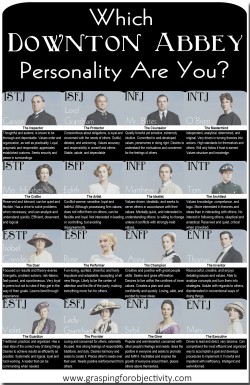The first time I heard of the Myers-Briggs Type Indicator test (MBTI), it was because my husband had to take this assessment at work.
Actually, many work places use this assessment due to its accuracy and easy-testing method.
Learning about the personality types of people you work with (or socialize with or live with) can help with productive communication and a general better understanding of those who surround you. Also, for some people, it can help them get in touch with their own feelings, thoughts and the reasons behind some of their own actions.
Take the test here and then read on to learn briefly about the 16 different personality types.
To completely understand this test, and your results, it’s best to have knowledge of the theory that it’s based on, which is Carl Jung’s theory of psychological types.
Essentially, Jung proposed the existence of two dichotomous pairs of cognitive functions:
the “rational” (judging) functions: thinking and feeling
and the “irrational” (perceiving) functions: sensation and intuition.
Jung believed that for an individual, these functions are expressed primarily in introverted or extroverted form. From this original idea, Myers and Briggs outlined their own theory of psychological type, and this is what the MBTI is based on.
Here’s a simple explanation of this typing from Wikipedia:
“Jung’s typological model regards psychological type as similar to left or right handedness: individuals are either born with, or develop, certain preferred ways of perceiving and deciding. The MBTI sorts some of these psychological differences into four opposite pairs, or dichotomies, with a resulting 16 possible psychological types.
None of these types are better or worse; however, Briggs and Myers theorized that individuals naturally prefer one overall combination of type differences.
In the same way that writing with the left hand is hard work for a right-hander, so people tend to find using their opposite psychological preferences more difficult, even if they can become more proficient (and therefore behaviorally flexible) with practice and development.
The 16 types are typically referred to by an abbreviation of four letters—the initial letters of each of their four type preferences (except in the case of intuition, which uses the abbreviation N to distinguish it from Introversion). For instance:
ESTJ: extroversion (E), sensing (S), thinking (T), judgment (J)
INFP: introversion (I), intuition (N), feeling (F), perception (P)
This method of abbreviation is applied to all 16 types.”
Once you’ve taken your personality typing quiz (linked above) you’ll discover which of the 16 types you are, as well as the percentages of each category that you registered within, and, in all honestly, once you know your type, Google search will bring up a plethora of information about it—more than I could ever include for all of the individual categories.
Another thing to keep in mind is that when professional companies use this, like the test my husband took and then introduced to me, they are generally of higher quality and more accuracy. That said, I’ve taken a fancier version of the test as well as three other online ones (including the source that I shared with you above) and all of the results were the same.
This chart displays ideal career paths (which is another reason that work places use this testing method):

Additionally, some types are more common than others. This chart includes a general population breakdown:

And I’m closing out this article with the best MBTI chart I’ve ever seen: one based on Downton Abbey characters.
Enjoy—and happy self-discovery.
“Whether people first hear about the two kinds of perception and two kinds of judgment as children, high school students, or parents or grandparents, the richer development of their own type can be a rewarding adventure for the rest of their lives.”
~Isabel Myers
Fun bonus: the thumbnail picture used for this article is my type (ENFJ). What’s yours? Leave it in the comments section below.
Relephant:
The First Four Words You See Describe You.
Seven Types of People. Which One Are You?
Bonus! Some personality types are a myth:
Like elephant journal on Facebook.
Editor: Catherine Monkman
{Photos: Wikimedia Commons, Flickr, Washington Post, New World Encyclopedia, Rachel Callahan}




Read 25 comments and reply